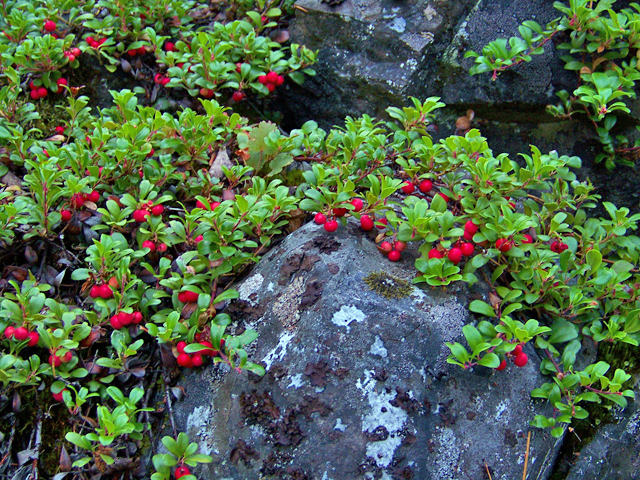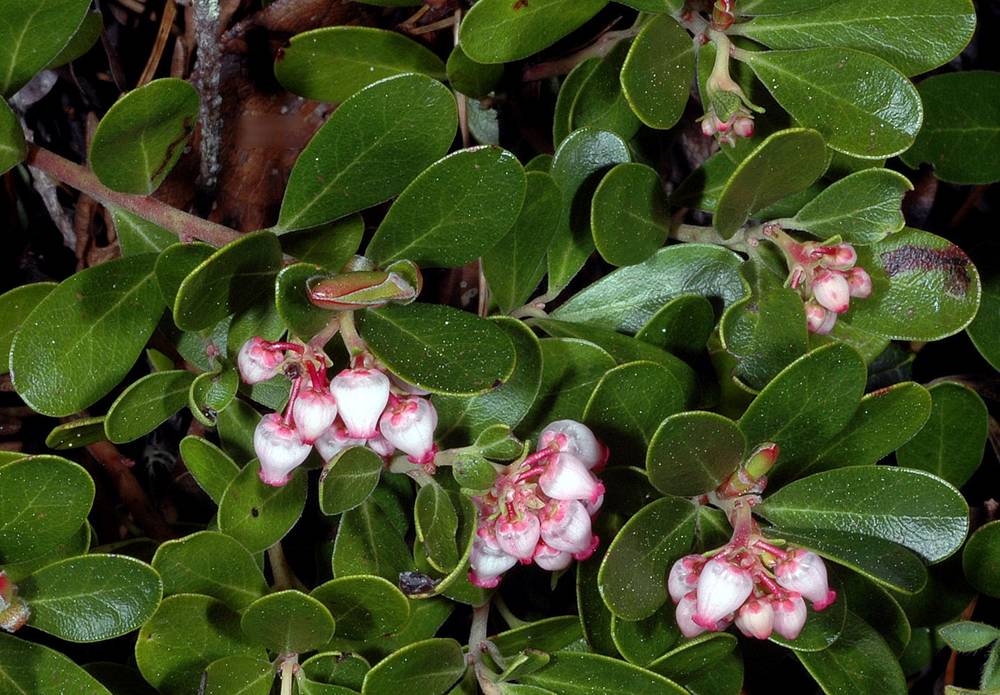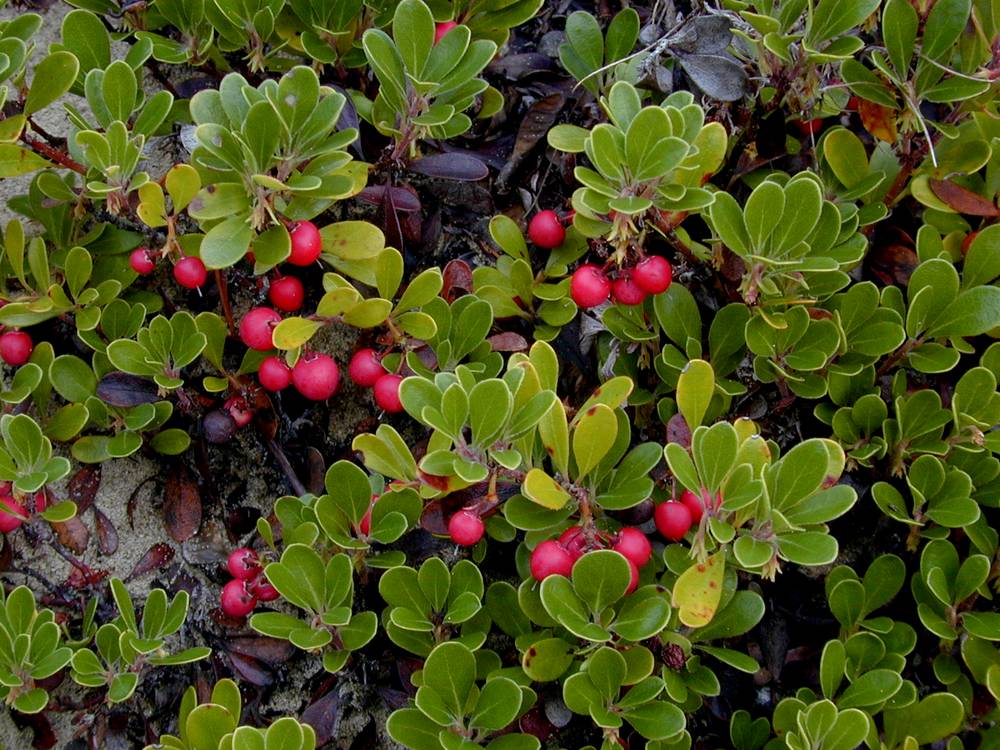Written By: Amiel Cruz
- Scientific Name: Arctostaphylos uva-ursi
- Canopy Layer: Groundcover
- Attracts: Insects and Hummingbirds
- Portland Plant List: Yes!
The Kinnikinnick, also known as Bearberry, is a versatile ground cover featuring stiff, upright, leathery, evergreen leaves on woody branches adorned in the spring with fragrant clusters of pink-white urn-shaped flowers that mature into small, attractive, red berrylike fruits that persist into winter. It grows across the Northern Hemisphere at high latitudes and high elevations. It is often found growing on sandy slopes, exposed rocky banks, dry subalpine meadows, and coniferous forests.

The fruit is edible and while it has been described as “mealy and tasteless” by human tastes, it is enjoyed by a variety of wildlife. Many birds, foxes, coyotes, and bears enjoy the fruit of this plant. The fruit persisting into winter made it an important food sources for some First Nations groups and the fruit was often processed, cooked, or preserved in some way to work with the fruit texture and lack of taste.

Blooming in April and May, the miniature, fragrant flowers droop down in clusters beneath the leaves. These flowers have been known to attract a variety of pollinators such as butterflies, bees, and even hummingbirds! The flowers mature into clusters of drupes that start green in the summer and mature into a spectacular deep red.

Behind the Name and Cultural Significance:
Part of the genus Arctostaphylos, which is comprised of manzanitas and bearberries. Manzanita, is Spanish for “little apple”, referring to the attractive, bright red drupes that adorn the branches of Arctostaphylos plants.
In greek- arctos means “bear” and staphyle means “bunch of grapes”, referring to the plant’s bundles of berries commonly eaten by bears. The specific epithet for this plant, uva-ursi, has a similar meaning in Latin with uva meaning grape and ursus meaning bear.
The common name Kinnikinnick is said to be derived from an Algonquin word meaning “the mixed” or “something that is mixed” referring to the various ingredients and smoking blends that are ritually used by Indigenous Americans and First Nations. This plant was a common ingredient in these blends.
This name was associated with the plant because of its medicinal and cultural uses, primarily with Indigenous and First Nations peoples. The leaves have been used medicinally as a diuretic and astringent, relieve kidney and bladder problems.
Sources:
- “ash.” nwf.org/NativePlantFinder. U.S. Department of Agriculture, Forest Service, Nation Wildlife Federation, University of Delaware. https://www.nwf.org/NativePlantFinder/Plants/1359
- “Fraxinus latifolia.” plants.ces.ncsu.edu. North Carolina State University & North Carolina A&T State University. https://plants.ces.ncsu.edu/plants/fraxinus-latifolia/
- Portland Plant List. Bureau of Planning and Sustainability, City of Portland, Oregon. 2016. Pgs. 3.2-2, 3.3-1, 3.5-1, 3.17-1. https://www.portland.gov/sites/default/files/2018-12/Portland_Plant_List_2016_Update_Final2.pdf
- Owston, Peyton W. “Fraxinus latifolia Benth.” srs.fs.usda.gov. United States Department of Agriculture, Fire Systems, Southern Research Station. https://www.srs.fs.usda.gov/pubs/misc/ag_654/volume_2/fraxinus/latifolia.htm
- Selviaggio, Sharon. “”Trap Trees” Offer A Promising Approach To Slow The Spread Of Invasive Emerald Ash Borers.” xerces.org. Xerces Society for Invertebrate Conservation. Sept. 22, 2022. https://www.xerces.org/blog/trap-trees-offer-promising-approach-to-slow-spread-of-invasive-emerald-ash-borers